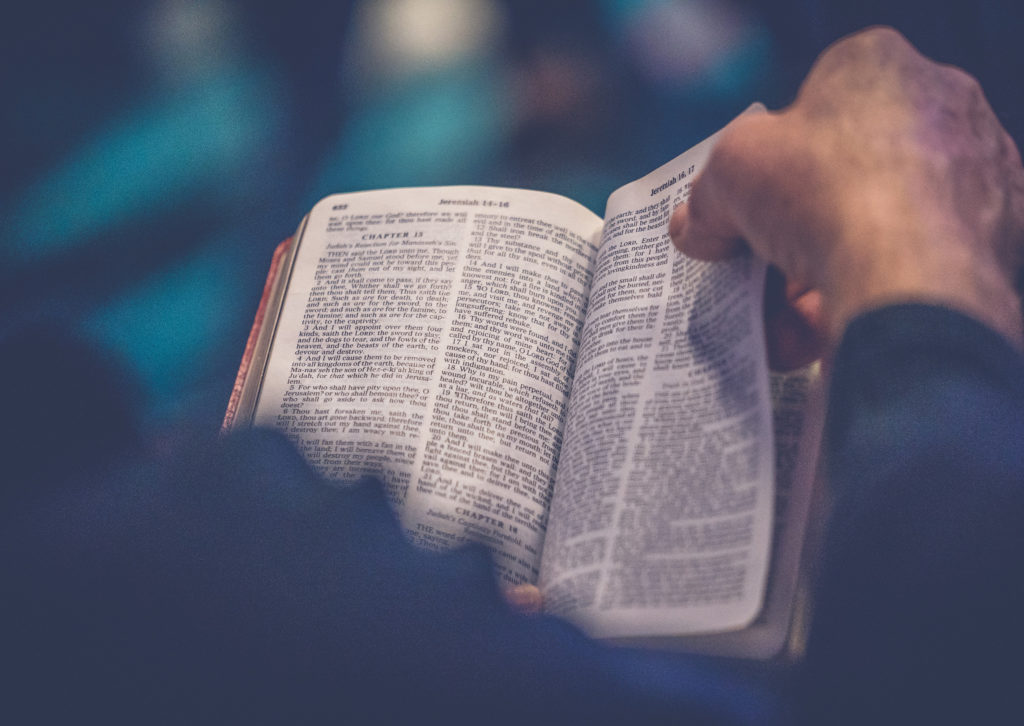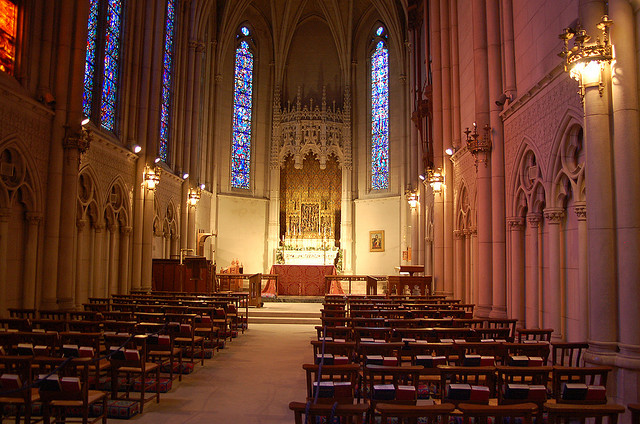Grace Cathedral

Morning Prayer (Zoom)
January 23, 2025 @ 9:00 am - 9:20 am

A brief service with spoken psalms, canticles, readings, and prayers. Part of the Liturgy of the Hours prayed by Christians across the centuries and the world. (20 minutes)
The perfect way to start each weekday, Episcopalian morning prayer is rooted in the monastic tradition and offers a deep sense of unity with other Christians throughout the world.
Throughout history and across the world, daybreak has been a time of prayer. Jewish tradition had prayer in the synagogues at sunrise as well as at other times each day. This Jewish pattern of prayer formed the basis of the Christian monastic Daily Office, with its prayers or “hours” at seven times in each day. In the revision of the Daily Office for the first English Prayer Book (1549), Thomas Cranmer reduced the number of services to two-one for morning (Matins) and one for evening (Evensong or vespers). In the Second English Prayer Book (1552), the morning service was given its present name: Morning Prayer.
The monastic hours of matins (e.g., Venite and Te Deum), lauds (e.g., Benedicte, omnia opera Domini, a “chapter” of scripture, Benedictus Dominus Deus, collect of the day), and Prime (e.g., a second “chapter” of scripture and the Apostles’ Creed) lend many elements to Morning Prayer. Psalms were recited at every one of the offices, with the whole Psalter recited once a week. However, in the 1549 BCP, psalms were read at both Morning and Evening Prayer, with the whole Psalter read “in course” once each month. In subsequent Prayer Book revisions, psalms have come to be used more selectively, although a monthly cycle of psalms read “in course” is still provided as an option. In the 1549 Prayer Book, the very short monastic “chapters” were lengthened to full chapters of both the OT and NT at both Morning Prayer and Evening Prayer. In the 1979 BCP, only one lesson must be read, and the appointed lessons are not so long.
In most Anglican churches, Morning Prayer once was the chief Sunday service on three out of four Sundays, with the First Sunday usually being a celebration of Holy Communion. Because the eucharist has been recognized as the “principal act of Christian worship on the Lord’s Day” in most parishes (see BCP, p. 13) this practice has not continued. However, Morning Prayer is clearly designated as a daily service for the worship of the church. This usage reflects the ancient tradition of the Daily Office.
Join us on Zoom for Episcopalian morning prayer each weekday and fill your spirit in preparation for the day.
Related Events
Morning Prayer (Zoom)
A brief service with spoken psalms, canticles, readings, and prayers. Part of the Liturgy of the Hours prayed by Christians across the centuries and the world. (20 minutes)
The perfect way to start each weekday, Episcopalian morning prayer is rooted in the monastic tradition and offers a deep sense of unity with other Christians throughout the world.
Throughout history and across the world, daybreak has been a time of prayer. Jewish tradition had prayer in the synagogues at sunrise as well as at other times each day. This Jewish pattern of prayer formed the basis of the Christian monastic Daily Office, with its prayers or “hours” at seven times in each day. In the revision of the Daily Office for the first English Prayer Book (1549), Thomas Cranmer reduced the number of services to two-one for morning (Matins) and one for evening (Evensong or vespers). In the Second English Prayer Book (1552), the morning service was given its present name: Morning Prayer.
The monastic hours of matins (e.g., Venite and Te Deum), lauds (e.g., Benedicte, omnia opera Domini, a “chapter” of scripture, Benedictus Dominus Deus, collect of the day), and Prime (e.g., a second “chapter” of scripture and the Apostles’ Creed) lend many elements to Morning Prayer. Psalms were recited at every one of the offices, with the whole Psalter recited once a week. However, in the 1549 BCP, psalms were read at both Morning and Evening Prayer, with the whole Psalter read “in course” once each month. In subsequent Prayer Book revisions, psalms have come to be used more selectively, although a monthly cycle of psalms read “in course” is still provided as an option. In the 1549 Prayer Book, the very short monastic “chapters” were lengthened to full chapters of both the OT and NT at both Morning Prayer and Evening Prayer. In the 1979 BCP, only one lesson must be read, and the appointed lessons are not so long.
In most Anglican churches, Morning Prayer once was the chief Sunday service on three out of four Sundays, with the First Sunday usually being a celebration of Holy Communion. Because the eucharist has been recognized as the “principal act of Christian worship on the Lord’s Day” in most parishes (see BCP, p. 13) this practice has not continued. However, Morning Prayer is clearly designated as a daily service for the worship of the church. This usage reflects the ancient tradition of the Daily Office.
Join us on Zoom for Episcopalian morning prayer each weekday and fill your spirit in preparation for the day.
A brief service with spoken psalms, canticles, readings, and prayers. Part of the Liturgy of the Hours prayed by Christians across the centuries and the world. (20 minutes)
The perfect way to start each weekday, Episcopalian morning prayer is rooted in the monastic tradition and offers a deep sense of unity with other Christians throughout the world.
Throughout history and across the world, daybreak has been a time of prayer. Jewish tradition had prayer in the synagogues at sunrise as well as at other times each day. This Jewish pattern of prayer formed the basis of the Christian monastic Daily Office, with its prayers or “hours” at seven times in each day. In the revision of the Daily Office for the first English Prayer Book (1549), Thomas Cranmer reduced the number of services to two-one for morning (Matins) and one for evening (Evensong or vespers). In the Second English Prayer Book (1552), the morning service was given its present name: Morning Prayer.
The monastic hours of matins (e.g., Venite and Te Deum), lauds (e.g., Benedicte, omnia opera Domini, a “chapter” of scripture, Benedictus Dominus Deus, collect of the day), and Prime (e.g., a second “chapter” of scripture and the Apostles’ Creed) lend many elements to Morning Prayer. Psalms were recited at every one of the offices, with the whole Psalter recited once a week. However, in the 1549 BCP, psalms were read at both Morning and Evening Prayer, with the whole Psalter read “in course” once each month. In subsequent Prayer Book revisions, psalms have come to be used more selectively, although a monthly cycle of psalms read “in course” is still provided as an option. In the 1549 Prayer Book, the very short monastic “chapters” were lengthened to full chapters of both the OT and NT at both Morning Prayer and Evening Prayer. In the 1979 BCP, only one lesson must be read, and the appointed lessons are not so long.
In most Anglican churches, Morning Prayer once was the chief Sunday service on three out of four Sundays, with the First Sunday usually being a celebration of Holy Communion. Because the eucharist has been recognized as the “principal act of Christian worship on the Lord’s Day” in most parishes (see BCP, p. 13) this practice has not continued. However, Morning Prayer is clearly designated as a daily service for the worship of the church. This usage reflects the ancient tradition of the Daily Office.
Join us on Zoom for Episcopalian morning prayer each weekday and fill your spirit in preparation for the day.
A brief service with spoken psalms, canticles, readings, and prayers. Part of the Liturgy of the Hours prayed by Christians across the centuries and the world. (20 minutes)
The perfect way to start each weekday, Episcopalian morning prayer is rooted in the monastic tradition and offers a deep sense of unity with other Christians throughout the world.
Throughout history and across the world, daybreak has been a time of prayer. Jewish tradition had prayer in the synagogues at sunrise as well as at other times each day. This Jewish pattern of prayer formed the basis of the Christian monastic Daily Office, with its prayers or “hours” at seven times in each day. In the revision of the Daily Office for the first English Prayer Book (1549), Thomas Cranmer reduced the number of services to two-one for morning (Matins) and one for evening (Evensong or vespers). In the Second English Prayer Book (1552), the morning service was given its present name: Morning Prayer.
The monastic hours of matins (e.g., Venite and Te Deum), lauds (e.g., Benedicte, omnia opera Domini, a “chapter” of scripture, Benedictus Dominus Deus, collect of the day), and Prime (e.g., a second “chapter” of scripture and the Apostles’ Creed) lend many elements to Morning Prayer. Psalms were recited at every one of the offices, with the whole Psalter recited once a week. However, in the 1549 BCP, psalms were read at both Morning and Evening Prayer, with the whole Psalter read “in course” once each month. In subsequent Prayer Book revisions, psalms have come to be used more selectively, although a monthly cycle of psalms read “in course” is still provided as an option. In the 1549 Prayer Book, the very short monastic “chapters” were lengthened to full chapters of both the OT and NT at both Morning Prayer and Evening Prayer. In the 1979 BCP, only one lesson must be read, and the appointed lessons are not so long.
In most Anglican churches, Morning Prayer once was the chief Sunday service on three out of four Sundays, with the First Sunday usually being a celebration of Holy Communion. Because the eucharist has been recognized as the “principal act of Christian worship on the Lord’s Day” in most parishes (see BCP, p. 13) this practice has not continued. However, Morning Prayer is clearly designated as a daily service for the worship of the church. This usage reflects the ancient tradition of the Daily Office.
Join us on Zoom for Episcopalian morning prayer each weekday and fill your spirit in preparation for the day.







